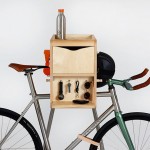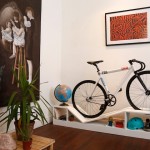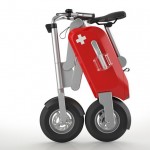 |
Jack Lam is a cinematographer based in Beijing and Hong Kong. His body of work includes TV commercials, seasonal TV drama series and theatrical feature films. His commercial clients include Cathay Pacific, Lenovo, Airbnb, Alibaba, and Mandarin Oriental Hotel Group. He also works with DJI as a design consultant for their cinema products.
This guest editorial has been lightly edited for style and clarity.
As a working cinematographer, I am super excited by Panasonic’s announcement of the Lumix S mirrorless camera system. The Panasonic GH5 is so well-designed, it has become a reliable workhorse for many video shooters. I have no doubt a full-frame version of it will be amazing, and everything I read about the S1/S1R confirms that.
However, Lumix S has the potential to become much greater that what we see in this product launch. With this brand new camera system, Panasonic has a unique opportunity to create the perfect small camera system for professional cinematographers. But doing so requires Panasonic to address a long-standing problem that is overlooked by all other camera makers, as well as some rethinking of conventional ideas on camera design.
This missing feature – one that can become a potential killer feature for Panasonic – is good manual focus control for video.
“What’s the big deal with MF?” one may ask, “Don’t most cameras already have MF?” Well, when I say good manual focus control, I mean good enough for real working professionals – advanced documentarians and Hollywood cameramen alike.
 |
| The new Lumix S series cameras present an excellent opportunity for Panasonic to redefine the interface between mirrorless cameras and cinematographers who need pro-level focus control. |
I want MF control that is simple, accurate, reliable, repeatable, predictable, measurable and ergonomically sound. It should also be wireless-capable and highly integrated as part of the camera (so that we can keep the camera small and don’t need to add six other accessories just to pull focus). Do you know of any small (DSLR/mirrorless) camera in the market that fulfills all of the above requirements? I have found none.
My perspective
My work varies widely in budget and crew size, ranging from run-and-gun documentaries, TV commercials to feature films for national theatrical releases. While the Arri Alexa is my go-to camera of choice for most of my work, I also use small form-factor mirrorless cameras when I see fit. I used to own every Panasonic GH model from the GH1 to the GH4, before I took a break from the m43 system for the full-frame Sony A7S.
This missing feature – one that can become a potential killer feature for Panasonic – is good manual focus control for video.
There are many instances where a smaller camera is the better camera for the job (for example, run-and-gun docs, sensitive locations, small gimbal, special car rigs, crash cams, etc.). Unfortunately, every time I shoot with a small camera I am faced with one big problem, a problem that haunts every video shooter but one that receives very little attentions in camera reviews: how do I pull focus? To be more specific, how do I pull focus effectively and professionally, as my director expects me to? How do I make sure I can nail the focus equally well in the first take, the second take, and each take thereafter?
The problem with focus pulling in today’s cameras
I am sure every DSLR video shooter shares this experience. Ever since the so-called DSLR video revolution, anyone looking to get into this game must build their own camera rig with all kinds of third-party components as if making a science project. Finding the right combination of lenses, lens adapters, focus gears rings, follow focus system, and the rig cage to hold everything together… All of these take a lot of time and energy to experiment and to troubleshoot, while we should really be focusing our time on our own artistic growth. The worst thing is, despite all the time and money we spend, the resulting rigs we built are never very good. They are unreliable, clumsy to use, and not very ergonomic.
The need to piece together unstandardized third-party camera parts also introduce uncertainties to productions. While we can order an Arri Alexa kit from any rental house in the world and have a pretty good idea of what to expect, it is never the case with DSLR/mirrorless camera rentals. Running a multi-camera shoot usually means operating with camera rigs from multiple brands, and their parts are not always compatible with each other.
All such desperate attempts in rig-building are primarily meant to provide a means of focus control. At the heart of this problem is the fact that camera manufacturers have failed to provide a good solution for focus pulling as part of their camera design.
 |
|
Would you call such a monster user friendly? |
Autofocus is not the answer for professionals
With the incredible progress in autofocus technology, can AF help us achieve good focus pulling, or even replace MF altogether? The answer is a resounding NO. Autofocus IS NOT and WILL NEVER be a good solution for professional cinematographers.
I have tried the AF in some of the latest cameras in the market. Dual pixel phase detection, facial recognition, AI subject tracking… I have to say the amount of technology is very impressive. AF works amazingly for stills, but for video I find it only useful under very limited conditions. Perhaps AF can be useful when I am following only ONE subject with a small gimbal without a focus puller’s help. Maybe I can give AF a try when I am shooting a sit-down interview on a slider. But when it comes to professional filmmaking, these said situations are just ‘kindergarten focus pulling’.
With the incredible progress in autofocus technology, can AF help us achieve good focus pulling, or even replace MF altogether? The answer is a resounding NO. Autofocus IS NOT and WILL NEVER be a good solution for professional cinematographers.
Real focus-pulling in a professional setting is much more complicated and much more nuanced. It often involves multiple actors and multiple marks. The camera may be panning from actor to actor, who may or may not be hitting their marks. We need to synchronize our focus shifts with dialogue beats, action beats, and emotion beats. Sometimes we need to predict the action and rack focus before the actor moves. Sometimes we don’t want to focus on the actor’s eyes. In fact, even the term ‘follow focus’ can be misleading because sometimes we intend to not follow anything at all to create a certain mood. Until the day arrives when a computer can understand dialogues, emotion, and esthetics, it is only foolish to think that AF can replace a focus puller.
I would even argue that the reason why some video shooters would even consider trying AF is only because there is no good MF control available to them. If we have an easy way to control MF reliably, most of us wouldn’t even need to bother with AF at all.
After all, why dumb down to artificial intelligence when we have the intelligence (and heart) of a real human being?
Focus control for stills and video are two different animals
The old saying goes, “To a man with a hammer, every problem looks like a nail.” When camera engineers started making still cameras that shoot video, the obvious solution for focus control was to use the existing AF system that works so well for stills and applied it to the video mode. Then the marketing department finished the job by calling it the new frontier of filmmaking.
However, focus control for motion picture is a very different task than getting sharp focus in a still image in many ways. For stills, all we need is to place the focal plane at the right subject as quickly as possible. How the image looks during the focusing process does not matter. For video, there is an element of time, and every frame counts. During a focus pull, the soft frames are just as important as the sharp ones as a form of artistic expression. That means hunting for focus is not an acceptable strategy.
For stills, all we need is to place the focal plane at the right subject as quickly as possible… For video, there is an element of time, and every frame counts.
To put it simply, focusing for stills is a question of WHAT to focus on. Focusing for video involves the interpretation of WHAT, WHEN, and HOW FAST to focus, and that makes it a much more complex problem for a computer to solve because it requires the understanding of intention.
Besides, focus pulls that look timely and confident often require one to know the focal distance of out-of-frame subjects ahead of time. Camera-based AF technology simply can’t do that.
Touchscreen tapping IS NOT focus pulling
There is an element of performing art in focus pulling. To a focus puller, the focus wheel is like piano keys are to a pianist. A focus puller’s distance scale is like a musician’s octave scale. A real focus puller thinks in terms of feet and inches, and prefers to have total control of focal distance. Then there is rhythm and timing in focus pulling, just like music.
For the same reasons why a piano app on an iPad can never replace a real piano, touchscreen tapping can never truly replace the focus wheel. If you want to build a camera that is loved by real professionals, you must first understand and respect the way a professional works.
 |
| If a professional musician can’t fit a grand piano in his tiny New York apartment, what would he get instead? The same goes for focus pulling with small cameras. |
Focus pulling truly is an art form (let the pros do it their way)
If you still have any doubt in the above statement, this YouTube video by Fandor does a great job explaining the intricacy of focus pulling.
Please note – many of the focus pulls featured in this video, while being very easy to perform manually, are simply not possible with AF.
Small cameras deserve professional manual focus control too
Skeptics may say, “if you care so much about the art of focus pulling, you should be using those big, expensive camera systems.”
This is certainly not true. Even big Hollywood productions have a need for small cameras with good focus control. I once spoke with cinematographer Tom Stern, ASC, about his experience shooting the movie American Sniper (2014). He shared that one day they had an interior helicopter scene, and it took a very long time to set up their Alexa XT cameras inside the tiny space. Director Clint Eastwood figured they were running out of time and made the call to “let’s bring in that little camera”. They ended up shooting the whole scene with the Blackmagic Pocket Cinema Camera.
In retrospect, Mr. Stern expressed disappointment with this camera for two reasons: 1) the image didn’t match well with the Alexa; 2) the pocket-sized camera wasn’t so small anymore after the cinema lens and the Preston follow focus system (and the required accessories to support it) were mounted.
Sadly, four years after the movie was made, we still don’t have a small camera that fully answers Mr. Stern’s demands.
Articles: Digital Photography Review (dpreview.com)































































You must be logged in to post a comment.